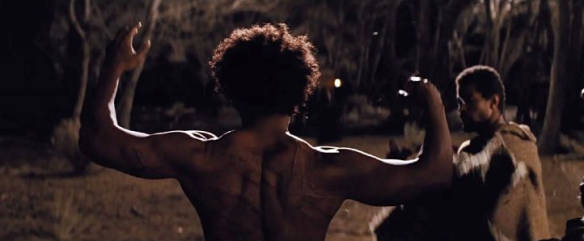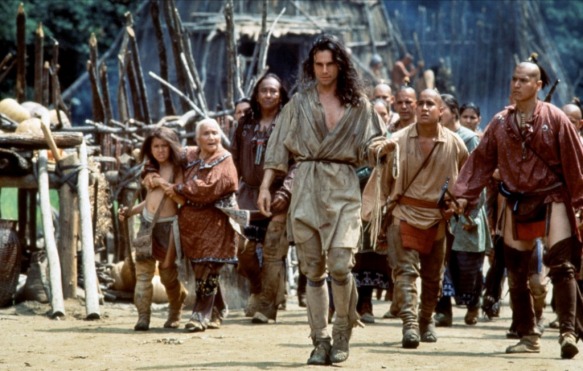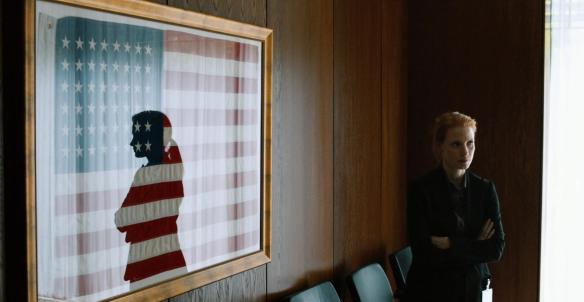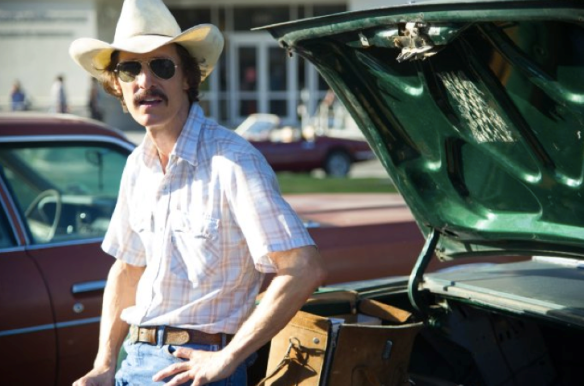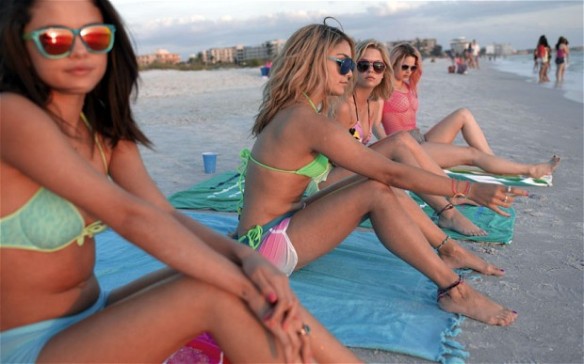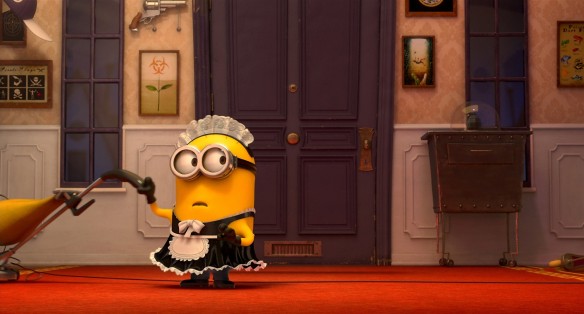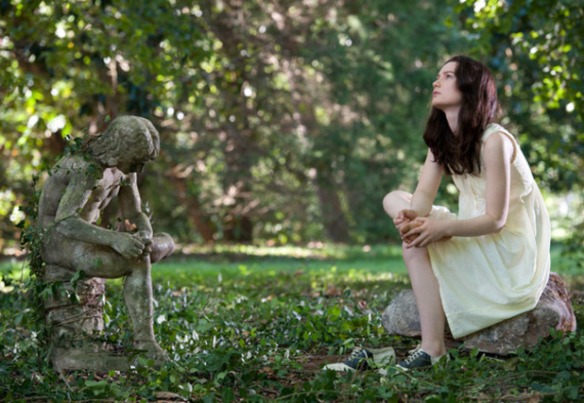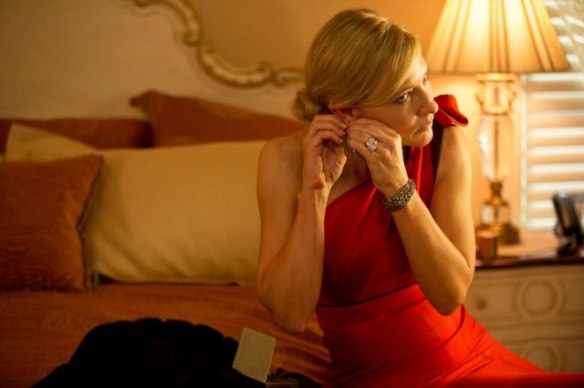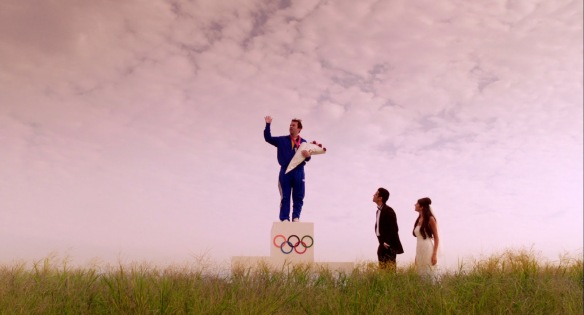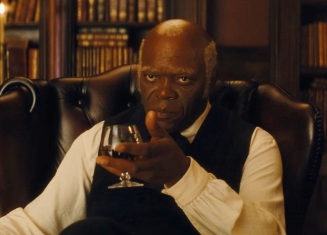It’s been a while since my last post, but that’s because I was brewing up this magnificent list! Not the top ten films that came out in 2013, but the top ten films I watched for the first time this year, whether I was watching it on the big screen or squinting at a tiny, pixilated player on my laptop. (I did notice that this year’s list includes many more in-theater films than last year’s list, though — maybe because I’m living in a city instead of being tucked away on a college campus, or maybe because I got tired of squinting at tiny, pixilated players on my laptop).
So here it is, in ascending order. Enjoy, and feel free to share your own top 10!
10. Django Unchained (2012) – Quentin Tarantino
Gritty, terrifying, and farcical all at once, Django Unchained has become one of my favorite Tarantino films (I reviewed it earlier this year). Filmed in the style of old Spaghetti Westerns, the story centers around Django (Jamie Foxx), a freed slave in the Deep South who is on a mission to rescue his wife Broomhilda (Kerry Washington) from the infamous plantation Candyland. The subject matter is weighty and at times incredibly upsetting, but it’s tempered with Tarantino’s trademark snappy dialogue, exaggerated comic-book violence, and dark humor. It’s worth seeing if only for the fantastic supporting characters: in particular Christoph Waltz as Dr. King Schultz, dentist turned bounty hunter, and Leonardo DiCaprio as the ruthless master of Candyland.
9. The Last of the Mohicans (1992) – Michael Mann
This film features gratuitous smoldering on the part of Daniel Day-Lewis. Taciturn, shoulder-length-haired, weapon-wielding smoldering. You have been warned! The premise: in the midst of the French and Indian War, Native American–raised trapper Hawkeye (Day-Lewis) strives to ensure the protection of a British Colonel’s daughters, Cora (Madeleine Stowe) and Alice (Jodhi May). This is a classic adventure story, complete with chase scenes, epic battles, and some steamy romance on the side. What makes The Last of the Mohicans particularly stand out, however, is its brutal, lifelike twist — there’s a realistic edge to the violence, an almost Game of Thrones–esque willingness to kill off characters. The end result is something both romantic and realistic, a compelling combination.
8. Zero Dark Thirty (2012) – Kathryn Bigelow
I went into this film with some doubts, unsure of whether it was too soon to make a blockbuster about what the trailers were calling the greatest manhunt in history, but I shouldn’t have worried. As we saw in The Hurt Locker, Bigelow has a way of handling the events of war thoughtfully, tactfully, and with an almost Hemingway-esque injection of emotion that you barely even notice until it hits you. Jessica Chastain plays Maya, a young, feisty, and incredibly intelligent CIA officer who becomes obsessed with the search for Bin Laden and, after years of investigating, ultimately leads the troops to his whereabouts. The film is exciting, as any good mystery/thriller should be, but it’s also hesitant, bittersweet. There are implicit questions about who we are as a country right now and what we’re trying to do. I was rooting for it for best picture last year (somewhat halfheartedly because it seemed like Argo was kind of a shoo-in).
7. Dallas Buyers Club (2013) – Jean-Marc Vallée
Based on a true story, this film follows Ron Woodroof (Matthew McConaughey), a rough-and-tumble rodeo man who is given a shock when he’s diagnosed with HIV and given an estimate of thirty days left to live. Before he knows it, Ron’s entire life has changed direction, and he finds himself starting a buyers club with an HIV-positive transvestite named Rayon (Jared Leto) to provide alternative treatments for HIV/AIDS. Considering the content, Dallas Buyers Club is surprisingly upbeat and uplifting, focusing on human resilience in the face of disease and hardship. The film is also carried by tremendous performances from McConaughey and Leto, who give nuanced renderings of characters who are at once strong, flawed, and loveable.
6. Spring Breakers (2012) – Harmony Korine
Scored by Skrillex and featuring gun-toting former Disney Channel stars, Spring Breakers could have easily been one of the worst films of the year — and indeed, I fully expected it to be. Instead, director Korine somehow managed to fashion an evocative and strangely alluring fever dream about four college-age girls who get carried away with the autonomy that spring break provides. There was a slew of films this year about decadence and irresponsibility — Sofia Coppola’s The Bling Ring and Baz Luhrmann’s The Great Gatsby, to name a couple — and Spring Breakers handles the material in a completely unconventional and effective way. The film draws you into its circling, nonlinear narrative and leaves you haunted. I wrote a full review this summer.
5. Despicable Me 2 (2013) – Pierre Coffin, Chris Renaud
My pride is the only thing keeping me from making this movie #1 on the list. I couldn’t have loved it more! There is some semblance of a plot — lovable former-villain Gru (voiced by Steve Carell) is living a domestic life with his three adopted daughters when he’s forced to return to the field, this time teeming up with agent Lucy Wilde (Kristen Wiig) — but the main focus of the film is, shamelessly, sheer adorableness. Most scenes revolve around the delightful, butter-yellow nuggets that are Gru’s minions bouncing about and jabbering in their helium-high voices, and Gru’s daughters causing trouble and tugging on Gru’s (and all of our) heartstrings. You’ll laugh, you’ll cry, you’ll laugh till you cry.
4. Stoker (2013) – Chan-wook Park
A tribute to Alfred Hitchcock’s Shadow of a Doubt (1943), Stoker tells the story of a young woman named India (Mia Wasikowska) whose father dies, and what happens when her handsome, enigmatic uncle Charlie (Matthew Goode) comes to visit. From an aesthetic standpoint this film is perfect. I raved about it in my review this summer; director Chan-wook Park has created a neurotic, unsettling, and tremendously beautiful world, balancing every shot and amplifying certain details, letting us into India’s subjectivity. The film’s content is twisted and dark but every moment is visually magnificent, and that combination of horror and beauty is captivating.
3. Blue Jasmine (2013) – Woody Allen
Like much of Allen’s work, this film is cleverly written and incredibly uncomfortable. Cate Blanchett plays Jasmine, a wealthy New Yorker who arrives in San Francisco to stay with (read: impose on) her adoptive sister Ginger (Sally Hawkins) while recuperating from the collapse of her marriage. Blanchett gives a truly outstanding performance as the neurotic, unstable Jasmine — radiant and poised in some scenes, frighteningly haggard in others, and constantly struggling with an undertow of panic and desperation. Also featuring Alec Baldwin, Blue Jasmine has that sort of painful, cutting insight that is a hallmark of Allen’s work, and humor that is not without sting.
2. Taxi Driver (1976) – Martin Scorsese
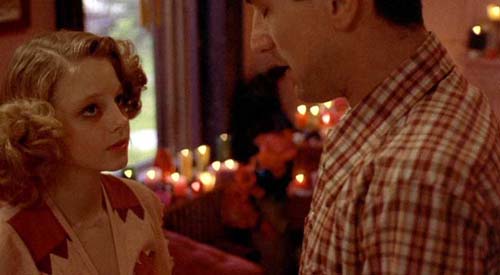 Taxi Driver is widely recognized as a classic, and I certainly expected to be impressed, but the film grabbed me in a way I hadn’t anticipated. Travis (Robert De Niro) is a former marine who takes a job as a taxi driver to cope with his insomnia, and slowly the job changes him into someone emotionally, intellectually, and physically unrecognizable. The film features its own bizarre kind of worldbuilding, nighttime New York becoming a seedy city of the underworld colored by the slick black streets and the lurid clothing of prostitutes. Travis’s journey from being a generally likeable (although somewhat adrift) person to being a person with a frightening, violent sense of purpose is aided in no small part by the repeated appearance of a child prostitute, Iris (Jodie Foster), whom Travis feels he must personally rescue from this damned place. Scorsese draws you into Travis’s perspective and takes you with him as far as you’re willing to go. It’s terrifying, evocative, exciting, and strangely beautiful. Full review here, in the NYC roundup I posted this summer.
Taxi Driver is widely recognized as a classic, and I certainly expected to be impressed, but the film grabbed me in a way I hadn’t anticipated. Travis (Robert De Niro) is a former marine who takes a job as a taxi driver to cope with his insomnia, and slowly the job changes him into someone emotionally, intellectually, and physically unrecognizable. The film features its own bizarre kind of worldbuilding, nighttime New York becoming a seedy city of the underworld colored by the slick black streets and the lurid clothing of prostitutes. Travis’s journey from being a generally likeable (although somewhat adrift) person to being a person with a frightening, violent sense of purpose is aided in no small part by the repeated appearance of a child prostitute, Iris (Jodie Foster), whom Travis feels he must personally rescue from this damned place. Scorsese draws you into Travis’s perspective and takes you with him as far as you’re willing to go. It’s terrifying, evocative, exciting, and strangely beautiful. Full review here, in the NYC roundup I posted this summer.
1. Sleepwalk With Me (2011) – Mike Birbiglia, Seth Barrish
I gushed about this film when I saw it in February. I would go so far as to compare Mike Birbiglia to David Sedaris in terms of the caliber of his storytelling (high praise!). Sleepwalk With Me is an autobiographical story that follows Birbiglia’s early pursuit of a career in standup; his crumbling relationship with his long-term girlfriend; and his experience with a rare sleeping disorder in which, to put it simply, he wreaks havoc while sleepwalking. The story is at once funny and heartbreaking, and it’s so earnest that it’s difficult not to love. Keep an eye out for Birbiglia — he has good things coming.

